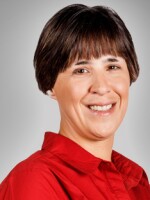BETHLEHEM, Pa. — Winter is one of the more prominent seasons to hear meteorologists introduce terms and phrases that help their audience learn the science behind the storms.
One phrase you might hear a lot about in the coming days is the “Greenland Block,” a pattern known to bolster the odds of sustained cold — and perhaps wintry weather.
What is it, and why have many prominent meteorologists been discussing it this week?
Know your weather basics
Air pressure can tell us what kind of weather to expect on a daily basis.
A sudden drop in air pressure usually brings stormy weather, and consequently, meteorologists call this drop in pressure “low pressure.”
You’ll see low pressure on a weather map represented by a red ‘L’ and often hear forecasters joke that ‘L’ stands for "lousy weather.” It typically means cloudy skies, windy conditions and wet weather — usually followed by colder temperatures.
A rise in air pressure means we can expect good weather, and meteorologists call this “high pressure.” It’s represented by a blue “H” on weather maps and means clear skies, calm conditions and dry weather.
But patterns all over the world affect the weather right here in the Lehigh Valley, and in winter meteorologists aren’t just looking at local weather maps. They also turn to other areas for clues of what could happen next.
So, what is 'blocking' high pressure?
Blocking patterns in the atmosphere happen when centers of high pressure or low pressure set up over an area in such a way that they prevent other weather systems from moving through.
What does that mean?
When a blocking pattern is in place, other systems are forced to go around it.
The important thing to note is that blocking patterns can remain in place for days, resulting in an extended stretch of the same weather for locations under the block.
What does this have to do with the Lehigh Valley?
By definition from the National Weather Service, a Greenland block is cut-off upper-level high pressure centered near Greenland — an island between the North Atlantic Ocean and the Arctic Ocean, northeast of Canada. It forces the jet stream (strong winds in the upper levels of the atmosphere that generally blow east to west and steer weather systems) to dive south. That opens the doors for Arctic air to head this way.
This setup allows cold air to remain trapped over the northeastern United States and depending on the strength, the mid-Atlantic region (our region!) as well.
When cold air and storm systems combine, it leads to good chances for snow, and on Monday, meteorologist John Homenuk said on Twitter that long-range guidance showed “one of the most impressive December blocks in a decade.”
Meteorologists also refer to this persistent blocking pattern as the Negative Atlantic Oscillation — a measure of the pressure difference between high and mid-latitude climates.
So, it's going to snow soon?
No, we're not saying that. We're saying the setup could lead to a snowy pattern, and Homenuk isn't the only one putting his focus on the Greenland Block. The Washington Post wrote a full story on it Tuesday you can read here.
Local meteorologist Bobby Martrich of EPAWA Weather Consultingalso said a "longstanding projection of arrival of colder-than-average temps (and snow chances) has been in the post-DEC week 1 period."
"Get the cold in place first, and the snow chances will follow," Martrich said on Twitter.
Longstanding projection of arrival of colder than average temps (and snow chances) has been in the post-DEC week 1 period. It still is. Ups and downs yet thru 12/7, then sustained cold DEC week 2 and beyond. Get the cold in place first, and the snow chances will follow. 12z GEFS: pic.twitter.com/5c63HrzjmS
— Bobby Martrich | EPAWA Meteorologist ☈ (@epawawx) November 29, 2022
Martrich likened the upcoming pattern to the winter of 2010-11, which was cold and snowy across our region and featured (you guessed it) — a Greenland Block.
It means the big factor going forward (if you're a fan of snow) is going to be the orientation of the jet stream, and the evolution of any potential storm systems traversing it. That will make all the difference between one or more major snowstorms that might impact the area, meteorologists say.
If things come together just right, it would allow intensifying storm systems to move up the Eastern Seaboard, rather than moving out to sea.


